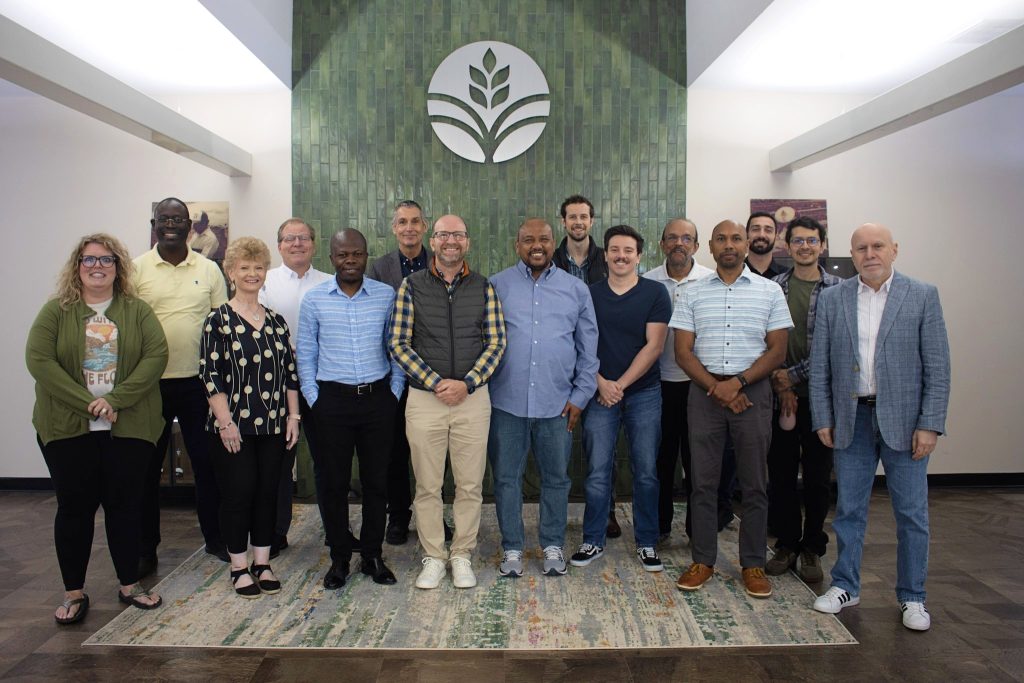

During the second week of June, the 21st “Hybrid” DSSAT Development Sprint was held, hosted by Dr. Upendra Singh at the International Fertilizer Development Center in Muscle Shoals, Alabama. In-person participants included representatives from the University of Florida, IFDC, and the University of Alabama in Huntsville, while there were numerous online participants from various countries, including the US, Costa Rica, Brazil, Denmark, Pakistan, Germany, South Korea, Spain, South Africa, Thailand, and Turkey.
This DSSAT Development Sprint, a one-week-long crop modeling hackathon, brings together experts to advance the science of crop models, data preparation, analytics, and the development and improvement of modeling tools and application programs. During this Hybrid DSSAT Sprint, significant progress was made on various fronts, including working for a new release of DSSAT (Version 4.8.5), implementing code improvements for the Cropping System Model (CSM), and updating multiple tools and utility programs in DSSAT.
In CSM version 4.8, the water logging processes and stresses have been improved. The subroutines and logic for the water logging effects on LAI and photosynthesis rate from the previous version (v4.7) of the CSM NWheat model have been re-implemented. New functionality has been added to consider water logging stress on carbohydrate accumulation and maximum grain weight. The next steps include further testing with more output variables to ensure accurate simulation of water logging conditions.
The Sprint also focused on greenhouse gas (GHG) modules, where changes for methane emissions were discussed, and a presentation on N2O simulation was given.
Related to the START v2 tool, a new data format was introduced and variables such as water retention parameters from the SoilGrids API were added. The tool has been updated to support the current version of SoilGrids. The next steps include implementing pedotransfer functions and comparing the new data with other measured data for validation.
In the CANEGRO-N model, nitrogen-related species coefficients have been moved to .SPE files, and more relevant coefficients have been identified. Work has started on linking CANEGRO residues to the Century model, and necessary datasets have been reviewed. The next steps include completing the connection of CANEGRO residues to the Century model and Sequence mode, and finding datasets with zero nitrogen to calibrate the .SPE nitrogen coefficients.
Since the previous Sprint, the soil temperature model’s damping depth calculation was updated from empirical equations to theoretical equations from Xiong et al. (2024), and a layering scheme was added to calculate temperature changes layer by layer. However, comparisons with measured data from Iowa and Nebraska fields showed no improvement. The next steps involve reverting to the previous approach while testing the Xiong calculation without the layering scheme. Additionally, there is a plan to incorporate soil surface temperature deviation from air temperature using the Penman-Monteith equation for hourly conditions, which may require an hourly loop within STEMP, similar to the approach used in CROPGRO.
The participants also delved into the current and next steps for intercropping implementation. The next steps involve developing a conceptual map to read the experimental file using FlexibleIO, creating a dummy experimental file with all fields populated for reading and storing variables in memory. CROPGRO-Soybean and CERES-Maize experiments will be used to start the prototype.
The Phosphate Rock Decision Support System (PRDSS), a web-based tool to predict the relative agronomic effectiveness (RAE) of phosphate rock (PR) concerning water-soluble P (WSP) fertilizers, was improved in the web/app versions, including API and R versions. Discussions were held on data organization, code relocation, and manuscript preparation.
The Generic Disease Model (GDM) is being improved and revisited, with new capabilities being implemented and new diseases being parametrized. The revision includes checking the values of simulated spore cloud production, with ongoing efforts focusing on maintaining the revision and implementation processes. New diseases have been started parametrized.
Economic sensitivity analysis was implemented on GSSAT, a Next-Generation Decision Support Tool for Precision Agriculture and Spatial Crop Modeling, with new GU interfaces created and adaptations made to handle disease simulations.
The next DSSAT Development Sprint will be held at the University of Florida in January 2025. We look forward to another productive collaborative development and innovation session in crop modeling.
